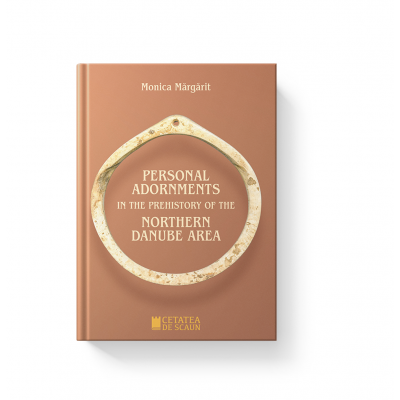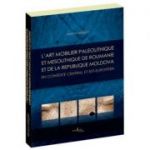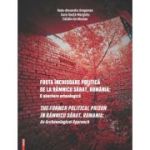Personal adornments in the prehistory of the northern Danube area - Monica Margarit

PRP: 69,00 lei (-15%)
?
Acesta este Prețul Recomandat de Producător. Prețul de vânzare al produsului este afișat mai jos.
Preț: 58,65 lei
Diferență: 10,35 lei
Disponibilitate: în stoc
Livrare estimată: Miercuri, 19 Feb. 2025
Autor: Monica. Margarit
ISBN: 9786065374485
Editura: Cetatea de Scaun
Anul publicării: 2020
Pagini: 172+91 planse
Format: 17x24
Categoria: Istorie
DESCRIERE
After a short introduction dedicated to the possible significations of the prehistoric personal adornments, the following sections were structured chronologically: the first part refers to the hunter-gatherer communities (the Palaeolithic and Mesolithic) north of the Danube, followed by the second chapter focused on the farmer-breeder communities inhabiting the same territory during the Neolithic and Eneolithic. North of the Danube, the first personal adornments appeared during the Upper Palaeolithic: various pendants of bone and stone, perforated teeth or perforated shells of gastropods. In the Early Holocene, the Mesolithic communities use both local aquatic resources (Lithoglyphus sp., Theodoxus sp., Zebrina sp.) and also marine gastropods (Tritia sp.) and scaphopod shells. Teeth, especially the Cervus elaphus canines were also perforated. Another element that is characteristic for this area of Europe is the use of the pharyngeal teeth of cyprinidae, sewn onto clothes. During the Neolithic, the most detailed data come from the Starčevo-Criș culture (c. 6000‒5700 BC). Shells used were those of Lithoglyphus sp., Ansius sp., Theodoxus sp. or Esperiana sp. gastropods, and of the Unio bivalves or the Antalis schaphopod. For the first time in the area were observed personal adornments made of Spondylus, Glycymeris and Cardium valves. Different rings or belt elements were processed from mammalian bones. During the Eneolithic period (c. 5000-3500 BC), Lithoglyphus naticoides shells and Unio sp. valves continued to be used. Also, beads made of Cyprinus carpio opercular bones were identified. Malachite, marble or other stones were used for cylindrical beads, along with various shapes of Spondylus adornments, bracelets of the Glycymeris valve or tubular beads of scaphopod shells. Sus scrofa canines were transformed into perforated plates. Still, the number of perforated teeth pendants is limited especially in the Gumelniţa tell-settlements. From mammalian bones were manufactured hairpins, cylindrical and tubular beads – imitating those of Spondylus valve – and perforated plates or triangular pendants.
Categorii librarie online
-Edituri /Promotii
-Cărţi noi
-- 50,40 leiPRP: 56,00 lei (-10%)
- 57,00 leiPRP: 60,00 lei (-5%)
- 57,00 leiPRP: 60,00 lei (-5%)
Promoţii
-- 50,40 leiPRP: 56,00 lei (-10%)
- 57,00 leiPRP: 60,00 lei (-5%)
- 57,00 leiPRP: 60,00 lei (-5%)












RECENZII